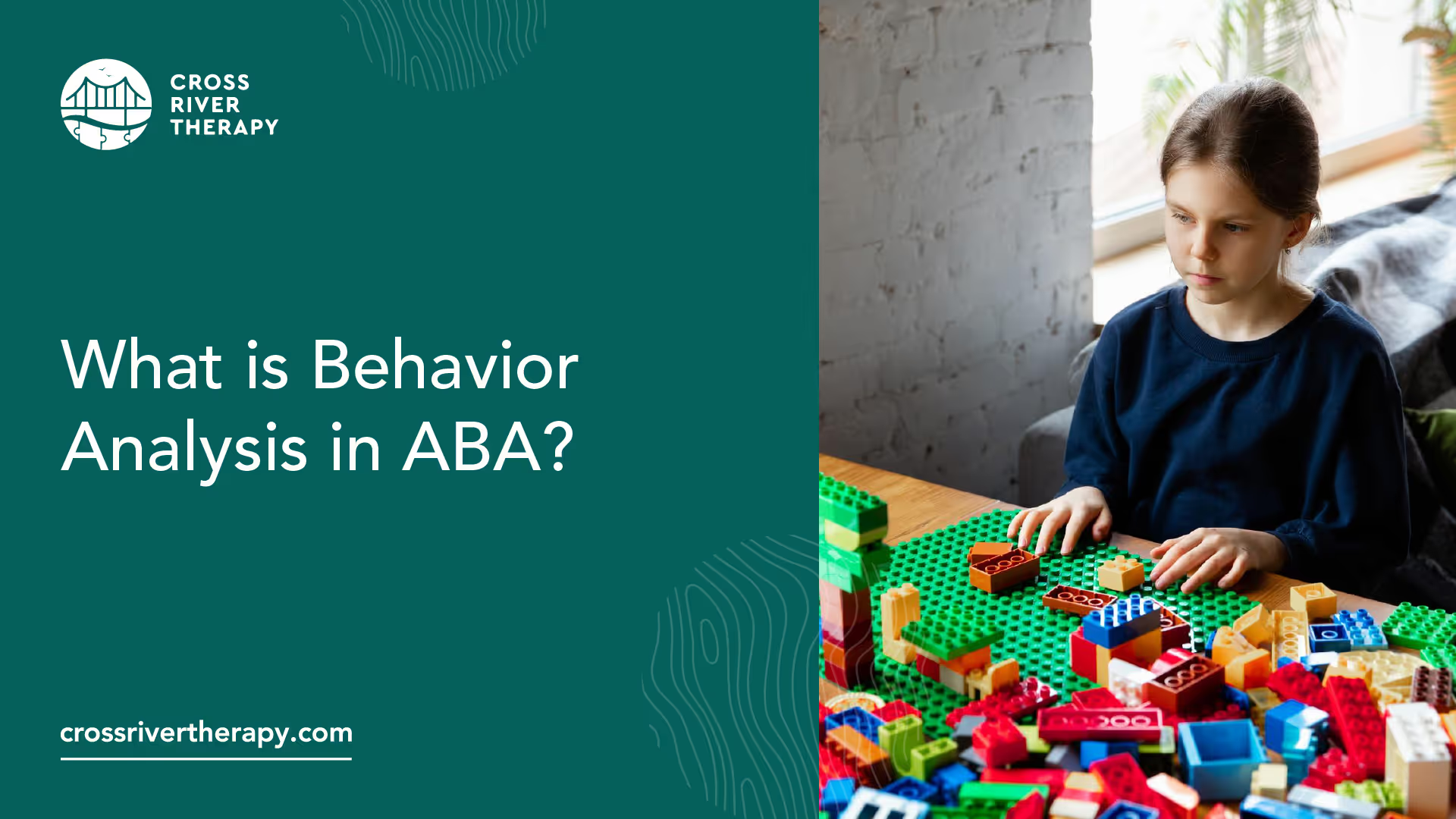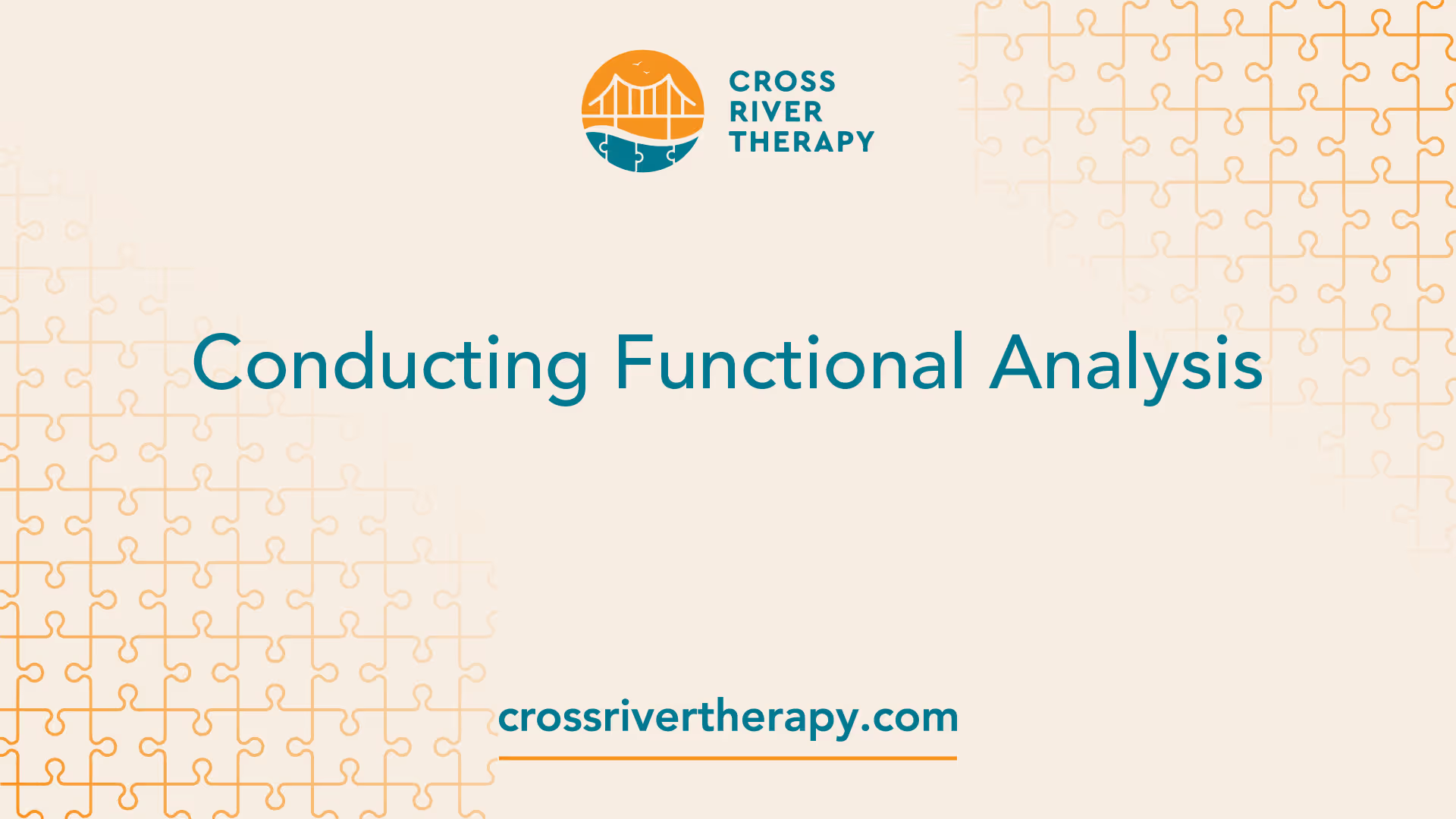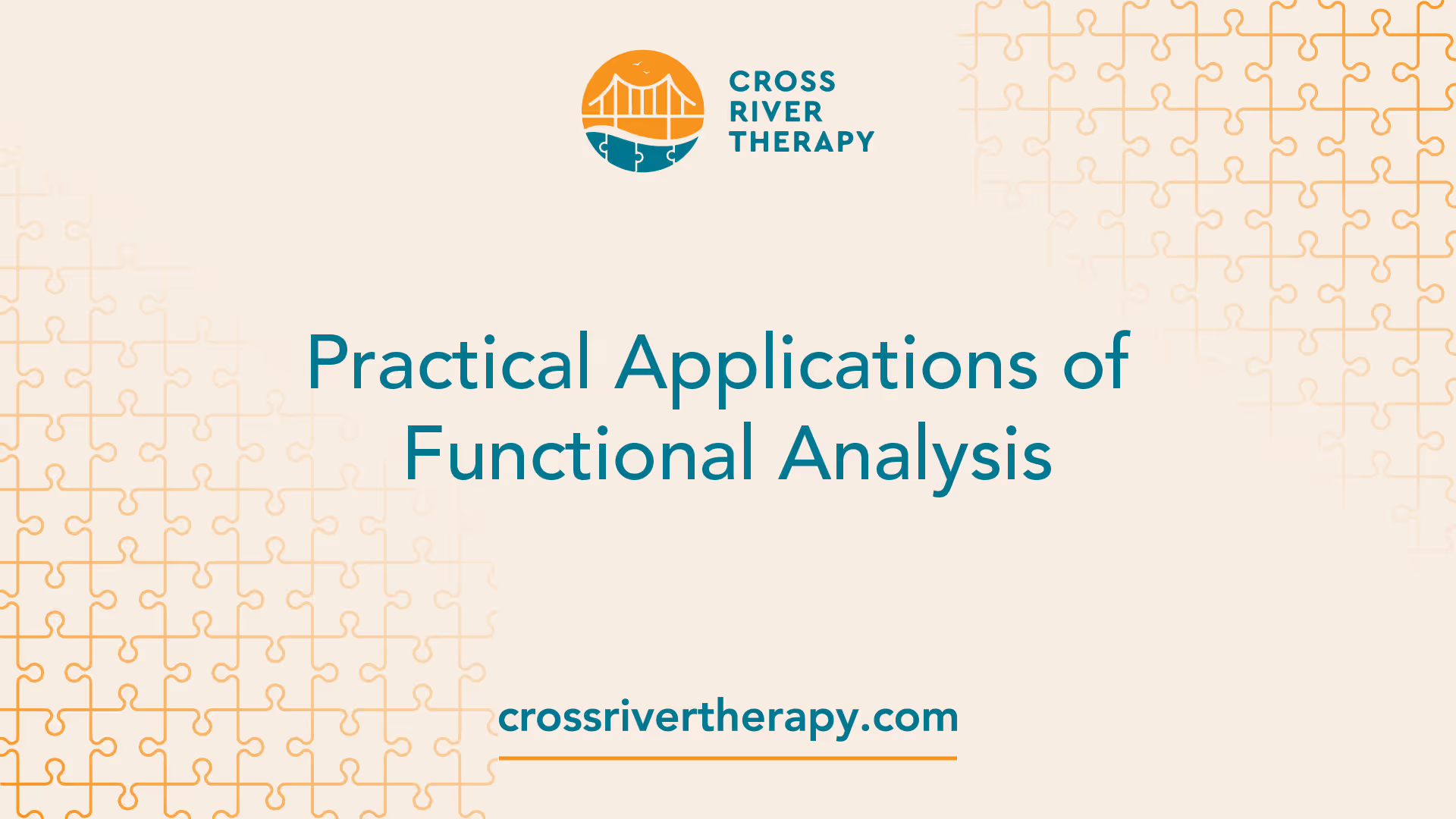What is Behavior Analysis in ABA?
Unlock the power of behavior analysis in ABA therapy for Autism. Discover its principles, techniques, and impact.
Understanding Functional Behavior Analysis
Functional Behavior Analysis (FBA) is a systematic approach that seeks to understand the purpose of an individual's behavior, particularly those with autism. It provides an in-depth understanding of the individual's behavior, the situations in which it occurs, and its consequences. This approach is particularly useful for those unable to self-report on their behaviors.

Importance of Functional Behavior Assessments
Functional Behavioral Assessments (FBAs) play an integral role in the functional behavior analysis process. These assessments determine the function of a student's behavior and the factors that maintain it. They help teachers understand the reasons behind a student's behavior and design interventions to help the student learn more acceptable methods to achieve their goals.
FBAs are recommended when basic classroom interventions are ineffective, and when behaviors occur frequently and disrupt the learning environment. This tool holds particular importance in dealing with young children who are nonverbal or unable to self-report on their behaviors, as well as with adults who are unable to find insight into the cause of their behaviors. For more information on FBAs, visit our page on what is functional behavior assessment in aba?
Multi-Tiered Support System
Conducting an FBA involves a multi-tiered system of support, which is a model providing increasingly intensive and individualized levels of support for academics and behavior. This approach includes professionals such as behavior analysts, school counselors, and special educators who are typically involved in the FBA process. This support system ensures that the individual needs of the student are met, and that the interventions designed are effectively implemented.
In summary, functional behavior analysis is a crucial tool in understanding and managing the behaviors of individuals with autism. It provides valuable insights into the cause of the behavior and offers effective strategies to manage and modify these behaviors. To delve deeper into the subject, explore our content on what is behavior analysis in aba? and what is function aba?.
Conducting Functional Analysis
When it comes to understanding the complexities of behavior, particularly in individuals with autism, conducting a functional analysis is an integral step.

Purpose of Functional Analysis
The primary question that surrounds 'what is functional analysis of behavior?' is addressed by understanding its main purpose. In essence, a functional analysis works to identify the variables that are influencing problematic behavior to develop effective treatments. This process is beneficial in scenarios where behavior data collection results are unclear, or when a behavior is severe and requires a definite determination of function before treatment. By understanding why the behavior occurs before implementing a treatment, functional analysis dignifies the treatment development process [4]. For more details on the process, refer to our article on what is functional behavior assessment in aba?.
Reinforcing Target Behavior
Another important aspect of conducting a functional analysis is the reinforcement of the target or problematic behavior for a brief period. This step is crucial to demonstrate which functions the behavior is most sensitive to. Rates of behavior in experimental conditions are then compared to the baseline condition, where there is no apparent motivation for challenging behavior [3].
Functional analysis can also be used within a cognitive-behavioral framework to assess, formulate, and intervene with high-functioning clients. Through functional analysis, therapists are able to choose a target behavior, understand problem behaviors, and address them systematically through the identification of triggers and consequences [5].
The process of conducting a functional analysis, although complex, holds great value in the study of autism. By understanding the purpose and methods of reinforcing target behavior, families and individuals can better manage and address problematic behavior. For more information on the topic, visit functional behavior analysis and what is function aba?.
Practical Applications of Functional Analysis
Functional analysis of behavior has numerous practical applications, specifically in therapeutic settings, and is a vital tool in both Behavior Therapy and Cognitive Behavioral Therapy.

Utilization in Behavior Therapy
Functional Analysis (FA) is often applied in scenarios where behavior data collection results are unclear or when the behavior is severe and requires a definite determination of function before treatment. It is most often used as a part of Behavior Therapy, including Cognitive Behavioral Therapy (CBT) or Dialectical Behavior Therapy (DBT). These skill-based modalities can provide fast relief from maladaptive behaviors without extensive psychoanalysis, making functional analysis useful when working with nonverbal or autistic children [1].
Functional analysis in behavioral therapy involves understanding the function that a particular behavior serves, defined by the response to specific contingencies in the environment or individual. It is a method of behavioral analysis designed to modify behavior based on certain principles, with its origins in work with children, young adults, and individuals with developmental disabilities.
Cognitive Behavioral Therapy Approach
Within a cognitive-behavioral framework, functional analysis can be applied to assess, formulate, and intervene with high-functioning clients. It helps in choosing a target behavior, understanding problem behaviors, and addressing them systematically through identification of triggers and consequences.
Functional analysis can also be utilized to enhance the therapist-client relationship. By altering contingencies based on behavioral analysis principles, positive changes can be brought about. For instance, by modifying responses to client behaviors, therapists can effectively address issues such as client avoidance and suicidal threats, improving the therapeutic process.
In conclusion, understanding 'what is functional analysis of behavior?' is key to its effective application in both Behavior Therapy and Cognitive Behavioral Therapy. For more in-depth information on this topic, visit our articles on functional behavior analysis, what is functional behavior assessment in aba?, and what is behavior analysis in aba?.
Components of Functional Analysis
Functional analysis is a crucial component in the understanding and modification of problematic behaviors. It comprises multiple stages including indirect and descriptive assessments, and conducting functional experiments.
Indirect vs. Descriptive Assessments
Functional analysis includes two primary types of assessments: indirect assessments and descriptive assessments. Indirect assessments involve the use of tools such as rating scales and questionnaires, which can provide valuable insights into the individual's behavior patterns. On the other hand, descriptive assessments involve direct observation without manipulation of environmental events, offering a more accurate and real-time understanding of the behavior in question NCBI).
Both indirect and descriptive assessments play vital roles in generating hypotheses about the contingencies that may be influencing the behavior. They lay the groundwork for the next stage of functional analysis – the functional experiment.
Conducting Functional Experiments
Functional experiments are the third component of functional analysis. These involve direct observation with manipulation of environmental events in order to test the hypotheses generated from the indirect and descriptive assessments. The process of conducting functional experiments involves three stages: assessment to generate hypotheses about contingencies, preparatory work for experiments to test hypotheses, and conducting experiments to modify hypothesized reinforcers. This process helps to identify triggers, reinforcers, and maintainers of problem behaviors Psychology Tools).
Functional experiments can be conducted in as little as 30 minutes by using timesaving methods like shorter sessions and trial-based analyses, making them efficient and practical for practitioners. Furthermore, functional analyses are less complex than perceived, as undergraduates have been shown to accurately implement common analysis conditions after just two hours of training, making them feasible for behavior analysts with training in behavior analysis NCBI).
Safety is a key consideration when conducting functional experiments. Functional analyses can be conducted for dangerous problem behavior by creating safe assessment contexts, providing differential consequences, and identifying precursor behaviors that are safer to reinforce. This ensures the safety of both the individual and the analyst NCBI).
In conclusion, understanding and applying the components of functional analysis is essential in effectively addressing and managing problematic behaviors. For more information on functional analysis and its role in behavior analysis, visit our articles on functional behavior analysis, what is functional behavior assessment in aba?, and what is behavior analysis in aba?.
Implementing Functional Analysis
The implementation of functional analysis is an intricate process that requires comprehensive training and robust ethical considerations.
Training and Supervision
Functional analysis should only be conducted by trained professionals or under supervision from professionals like Board Certified Behavior Analysts (BCBAs) or psychologists. It is typically utilized when traditional indirect and observational measures have not been able to definitively identify a function for the behavior and generate an effective behavior intervention plan [3].
Functional analyses are less complex than perceived. According to NCBI, undergraduates have been shown to accurately implement common analysis conditions after just two hours of training, making them feasible for behavior analysts with training in behavior analysis. This highlights the importance of proper training in ensuring the successful implementation of functional analysis in a real-world setting.
To learn more about the foundational principles and practices of functional behavior analysis, you can visit our comprehensive guide on what is functional behavior assessment in aba?.
Ethical Considerations
When implementing functional analysis, ethical considerations play a crucial role in ensuring the safety and welfare of both the individual and the analyst. Functional analyses can be conducted for dangerous problem behavior by creating safe assessment contexts, providing differential consequences, and identifying precursor behaviors that are safer to reinforce [4].
Moreover, functional analysis can also be used to manage and improve the therapist-client relationship. By altering contingencies, therapists can address problematic behaviors in clients, such as suicidal threats, and encourage more productive interactions during therapy sessions.
Functional analysis can be applied within a cognitive-behavioral framework to assess, formulate, and intervene with high-functioning clients. It helps in choosing a target behavior, understanding problem behaviors, and addressing them systematically through identification of triggers and consequences.
The implementation of functional analysis, while requiring meticulous training and stringent ethical considerations, can be an effective tool in understanding and addressing problematic behaviors. For a detailed understanding of the role and applications of functional analysis, you may refer to our article on what is behavior analysis in aba?.
Benefits and Challenges
While the functional behavior analysis is a powerful tool for understanding and altering problematic behaviors, it also comes with its own set of benefits and challenges. In particular, it plays a crucial role in shaping the therapist-client relationship and managing problematic behaviors.
Therapist-Client Relationship
Functional analysis can be leveraged to manage and improve the therapist-client relationship. By altering contingencies based on behavioral analysis principles, therapists can address problematic behaviors in clients, such as suicidal threats, and encourage more productive interactions during therapy sessions.
For example, if a client exhibits avoidance behaviors during therapy sessions, the therapist can use functional analysis to understand the triggers and consequences of this behavior. They can then modify their responses to discourage the avoidance behavior and promote engagement in therapy. This process of understanding and responding to client behaviors can help to build a more effective and therapeutic relationship.
Managing Problematic Behaviors
Functional analysis is particularly useful for managing problematic behaviors, such as violence or self-harm. This model of behavior assessment assumes that all behavior is learned and serves some purpose. By understanding the function of a behavior, therapists can develop interventions to help individuals change their behavior.
For instance, if a client displays verbal aggression in therapy sessions, the therapist can use functional analysis to understand the triggers and consequences of this behavior. They can then develop a plan to discourage aggression and promote more productive forms of communication.
While functional analysis is a powerful tool, it also comes with challenges. It requires extensive training and supervision to ensure that it is conducted properly and ethically. Furthermore, it can be a complex and time-consuming process, particularly when dealing with complex or severe behaviors. Despite these challenges, functional analysis remains a crucial tool in behavior therapy and has been recommended by the NICE guidelines for assessing challenging behavior in adults with autism spectrum disorder and learning disability.
For more information about what is functional analysis of behavior and how it is used in behavior therapy, visit our articles on what is functional behavior assessment in aba?, what is behavior analysis in aba?, and what is function aba?.
References
[1]: https://positivepsychology.com/functional-analysis-cbt/
[2]: https://iris.peabody.vanderbilt.edu/module/fba/cresource/q2/p04/
[3]: https://thinkpsych.com/blogs/posts/what-is-functional-analysis-fa
[4]: https://www.ncbi.nlm.nih.gov/pmc/articles/PMC3546636/
[5]: https://www.psychologytools.com/professional/techniques/functional-analysis/
[6]: https://blogs.nottingham.ac.uk/cffp/2018/11/05/functional-analysis-a-simple-worked-example-of-a-fictional-case/



